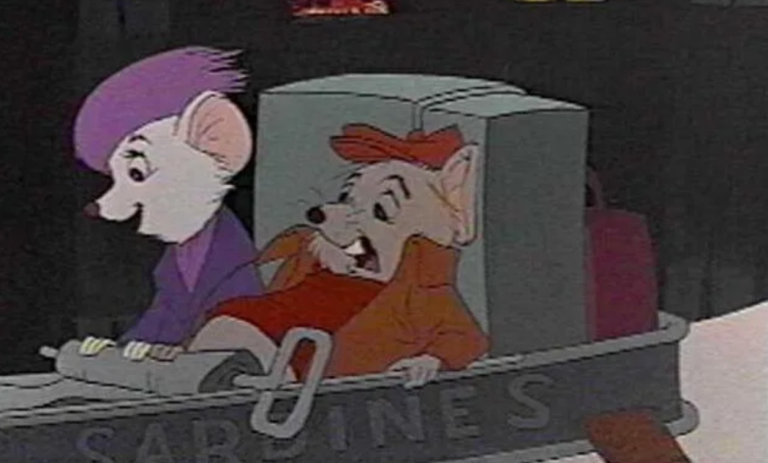Why We Love Animated GIFs
The culture around animated GIFs (‘Graphics Interchange Format’, or briefly-animated images) is exploding. For whatever reason, human beings appear to enjoy watching a few frames of something or anything at all repeat endlessly, and this urge is simultaneously driving and being driven by popular image-sharing services like Tumblr to where it’s hardly avoidable, even if…

The culture around animated GIFs (‘Graphics Interchange Format’, or briefly-animated images) is exploding. For whatever reason, human beings appear to enjoy watching a few frames of something or anything at all repeat endlessly, and this urge is simultaneously driving and being driven by popular image-sharing services like Tumblr to where it’s hardly avoidable, even if you’re not interested.

But it seems like almost everyone is. Animated GIFs mesmerize people inexplicably, rousing in users a strange compulsion to hoard, share and disseminate them — which is kind of funny, because they’re basically useless. Collecting still images, arrested memories, is something we can understand, as human beings have done this for time unending. Yet people rarely gather animated images that make sense; one would not save a picture of a film screenshot or a casual tabloid shot of a celebrity unless it was of particular significance or appeal to them, and yet animated GIFs that show just a few seconds of someone making a funny face repeatedly become exponentially more appealing to someone than a picture of the same person that did not move.
Sometimes the animations are spastic and bizarre, as if in deliberate offense of taste; repetitive gestures by old cartoon characters, flickering neon acidscapes that seem designed to challenge seizure thresholds, or incongruous nostalgia loops the sort that drive popular Tumblr account fuckyeah1990s. Other times, animated GIFs can be arresting in their beauty: High-quality still images where only the light patterns shift, or a film still where an actress blinks once, slowly (see the incredibly well-crafted scenes from beloved film on If We Don’t Remember Me. Plenty of people use animated GIFs for pornography, as they’re ideal for faster-loading, quicker-hit visual stimulation, and a site that hosts GIFs devoted to just one show – say, Pokemon, or Glee — can quickly develop a massive following.
When made well, animated GIFs feel like an evolution on the still photo, like some technology evolution that keeps pictures from freezing in time as up until now we have expected them to. J.K. Rowling dressed her Harry Potter wizards’ world with photographs that can move as a key way of making it seem more magical.
But in the world in which we live, where no one really bothers to put the TV on anymore because there are so many shows available in full online, and accessing nearly any film at any time on a whim whether one owns it or not is the norm for most people comfortable with the internet. Given the ready availability of rich media, how is it that you can throw two hours into a hole reading a Tumblr of few-frame collages, repeating over and over? Why do you want to watch Michelle from Full House frozen in the same continuous twitch?
Paging through animated GIF threads on message boards or Tumblrs is fun in part because of the sheer variety of surprises; whatever psychological mechanic makes people more likely to eat another chocolate when the box is full of different flavors probably keeps them hooked on wondering what the next GIF will be, too. Underpinning the GIF-browsing experience is the idea that the next clip will be somehow perfect for you, that some Photoshop whiz will have managed to have captured, forever living and breathing, your favorite moment from last week’s RuPaul’s Drag Race or American Psycho, or some cute animal peering from the grass again and again.
There’s the nostalgia factor, too – embedded unexpectedly in some web page is a GIF that captures the frizzy aesthetic of some beloved 1990s media, one you probably wouldn’t have sought out in full on your own but is pleasurable in brief visual recall.

But the tenets of idle browsing habits that govern many internet “black holes” (see also: the tendency to fall into Wikipedia pits reading article after article on topics in which you didn’t realize you had an interest) don’t fully explain the mesmeric quality of the animated GIF, why certain of them, despite being only a few frames long, manage to arrest the attention for far longer than they should.
In fact, our affinity for the animated GIF is weirdly logical; when information channels online became glutted with long-form writing, people began blogging, and then Tweeting, in a gradual but sensible evolution from 1400 words to 140 characters as the norm. If a constant flow of rich media is unavoidable, migrating toward a sort of video-shorthand seems a similarly natural response, occupying the urge for simple stimulation and freeing up our brains to be more selective about the actual long-form programming with which we engage – a new kind of channel-surfing, if you will.
But in a wonderful way, the popularity of GIF culture brings us back to the piquant, exciting frontier culture of the internet’s early days. The web was so irresistible to early adopters because it broke the floodgates of exposure – suddenly, no matter where you lived or what kind of life you led, you could see images of the wildest, most beautiful or most depraved things that the world has to offer. Amid the eye-opening randomness of exposure there was a sense of discovery and newness, and in particular, the internet reset people’s stimulation thresholds. As people became accustomed to the glut of imagery, they became harder to shock, but they also became harder to fascinate and to charm.
The animated GIF’s ability to preserve a single moment for endless viewing, to be forever owned to the last pixel by the eyes, gives it the unique opportunity to revive that fascination; tiny movements that would be lost in the grand landscape of a larger work become almost precious when isolated by themselves. Where it’d be swallowed in the narrative of a big-screen display of a full program, the subtle shift of someone’s facial expression, blink of an eye, or fall of hair is suddenly an articulate symphony of tiny movements when trapped on a web page in a little 200-by-300 frame.

GIFs pull into sharp focus the tiny detail we don’t get to catch in the sonorous, overwhelming broader media landscape, thereby creating out of the familiar something that feels brand-new unto itself. It’s like plucking a single tiny silver fish out of a cloudlike school to examine the under-appreciated natural detail; the luminous radial of its glasslike eye, the articulated grace of its miniscule scale pattern. In that regard, it’s like stopping time.
Although looking at a macro-view of an image board full of animated GIFs can be overwhelming to the point of discomfort, a haphazard collage of flickering movement, watching a single one is almost a protest against the roaring tidal wave of content that’s so increasingly impossible to avoid in the new media landscape.
That might particularly explain the fact that the most popular trade in GIFs are animations from late 1980s and early 1990s TV programs – nostalgia for the simpler childhood of the demographic most likely to be making GIFs – and pictures of facial expressions in slow motion, as if to disempower larger media with a snapshot of its distilled absurdity, or with the exposition of its inner machinery. Maybe that’s why people can’t get enough GIFs; they’re becoming calling cards of personal expression, of commentary on the internet-enabled information overload that threatens daily to snow us under. ![]()




